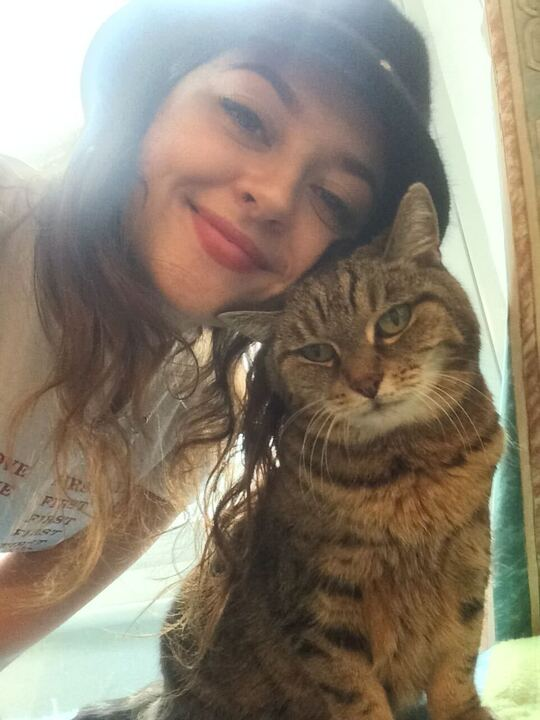Key takeaways
When an indoor-only cat goes missing, it can be incredibly stressful. Unlike outdoor cats, they don't have the necessary street smarts and experience to stay safe in the outside world.
Time is of the essence when searching for your kitty, so when you hit the 3-day mark, it's easy to panic.
But don't worry. Cats can go missing for days, weeks, and months and return home safely. So, follow our expert dos and don'ts to make sure your efforts are effective.
Quick Navigation
Dos for finding your cat after 3 days
Anxiety
Fear
Frustration
Helplessness
Guilt
Sadness
Do Assess the situation and start searching
1.
Check all rooms, closets, and hiding spots inside your home. Consult our guide on how to find a cat in your house for more tips.
2.
Investigate potential escape routes, like open windows or doors.
3.
Search your yard, garage, and nearby bushes or trees. Familiarize yourself with the top 10 unlikely spots where cats hide outside.
4.
Speak with neighbors to see if they've spotted your cat. Ask neighbors if they can check their homes.
5.
Post "missing cat" flyers around your neighborhood and on social media. Use our missing cat poster template to create an effective flyer.

Do monitor your area with trail cameras
Treats
Food
Water
Clothing
Blankets
Litter box

Do register your cat on a missing pet database
Provide cat owners with an expertly-designed and free, printable missing cat poster
Offer personal support and guidance
List missing pets on our website

Do coordinate a neighborhood search party
1.
Create a missing cat poster: Include a clear photo of your cat, their name, physical features, and your contact information. For tips on designing an effective lost kitten flyer, read our guide.
2.
Gather volunteers: Reach out to friends, family, and neighbors to form a search party.
3.
Divide the search area: Assign each volunteer a specific section of your neighborhood to cover.
4.
Provide search materials: Equip volunteers with flashlights, treats, and copies of the missing cat poster.
5.
Maintain communication: Set up a group chat to keep everyone updated on search progress and share any leads or sightings.

Do offer a reward for your cat's safe return
Create attention-grabbing posters: Design posters that highlight the reward amount, include a clear photo of your cat and provide your contact information. Learn how much reward for a lost cat is ideal in our guide.
Spread the word on social media: Share posts on local Facebook groups, Nextdoor, and other community-based platforms to reach a wider audience. Read our tips on how to spread the word effectively for a missing cat.
Notify local shelters and vet offices: Inform these organizations about the reward and provide them with posters to display in their waiting areas. Check our essential guide for reporting a missing cat.
Distribute flyers in the neighborhood: Hand out flyers to neighbors, local businesses, and passersby to increase the chances of someone spotting your cat.
Update your missing pet database entry: Include the reward information in your cat's profile on the missing pet databases you've registered with.
Offering a reward can provide extra motivation for people to keep their eyes peeled for your missing indoor cat.

Do prepare for your cat's return
Food and water: Have your cat's favorite meals and fresh water available to help them regain their strength.
Clean litter box: Set up a clean and accessible litter box to encourage proper litter habits.
Comfortable bedding: Provide a cozy and familiar bed or blanket to help your cat feel secure and relaxed.
Toys and enrichment: Keep your cat's favorite toys and puzzles handy to stimulate their mind and ease the transition back to their indoor life. To better understand your cat's behavior, read about how cats get lost.
Medical care: Be prepared to take your cat to the vet for a checkup, as they may have sustained injuries or been exposed to illness while they were missing.

Don'ts for finding your cat after 3 days
Don't ignore the importance of 3 days
Increased vulnerability: As time passes, your cat might become more susceptible to dangers, like exposure to harsh weather or encounters with predators. Learn more about the odds of finding a lost cat.
**Diminishing scent trail: **Your cat's scent trail may weaken over time, making it harder for them or others to find their way home. Read about how cats find their way home.
Waning community interest: The more time that passes, the less likely people will be actively looking for your cat. It's essential to keep your search efforts front and center in your community. Learn how to spread the word effectively on Facebook.

Don't rely solely on your initial efforts
Expand your search area: Your cat could have traveled further than you initially thought. Gradually expand your search radius, covering new ground each day.
Update posters and flyers: Refresh your missing cat posters with new information, photos, or a reward increase. This can reignite interest and generate new leads.
Utilize social media: Regularly update your social media posts and join local missing pet groups to keep your cat's disappearance visible.
Alert mail carriers and delivery drivers: Inform local mail carriers, delivery drivers, and other individuals who frequent your area, as they may have spotted your cat**.**
Don't give up hope
Don't ignore your local animal shelter
Frequently Asked Questions
How long do indoor cats go missing for?
If an indoor cat escapes, they'll usually go missing for 24-48 hours. However, some cats may be found after weeks or even months.
Is it normal for a cat not to come home for 3 days?
No, it is not normal for a cat to not come home for 3 days. This may indicate that they are lost or injured and you should report them missing as soon as possible and start searching for them.
Will an indoor cat come back home?
Many cats can find their way home. However, indoor cats haven't had the practice. It's likely that your indoor cat will be able to use their powerful sense of smell to come back home, but you shouldn't assume they will. Instead, be proactive and start searching for them.
Why do indoor cats go missing?
Indoor cats may go missing because their fight or flight instinct was triggered. This can be caused by stress, fear, and neglect. However, often, indoor cats are just curious about the outside world and can become lost when they go exploring.
How do I attract my cat back home?
To attract your cat back home, leave strong-smelling items outside your house. These should include clothing, blankets, food, treats, and their litter box.
What do indoor cats do if they get out?
If your indoor cat gets out, they'll likely hide. Their fight-or-flight instinct will have kicked in, which will tell them to hide and stay away from interactions with other people and animals.
How long should my cat be missing before I worry?
If your cat has gone missing, you should be proactive straight away. Report them missing and start searching for them immediately.



